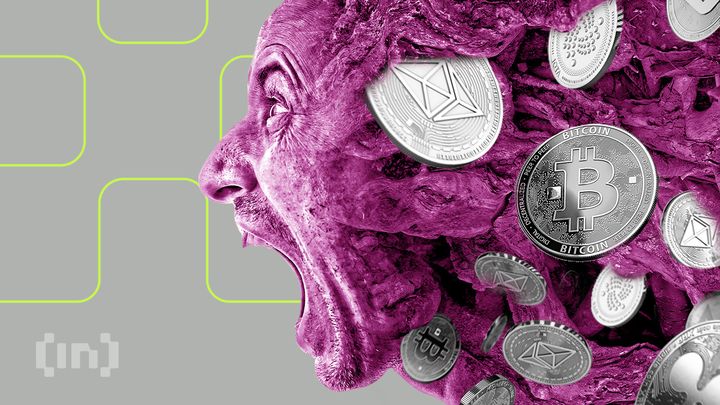Cryptocurrencies are becoming increasingly popular, and with this popularity comes a greater risk of cyber-attacks. In order to keep your cryptocurrencies safe, it is important to understand the biggest flaws in crypto security and how to avoid them.
This guide will explain blockchain technology and how it works, as well as discuss the biggest flaws in crypto security. We will also recommend some best practices for securing your cryptocurrencies, as well as some of the best smart contract security services available.
In this guide:
What is crypto security?

Crypto security is a risk management system that ensures that no unauthorized source can access crypto assets. It is fundamentally important to any entity in the industry.
There are several key indicators of good crypto security, which are touched upon below. Bad crypto security can lead to a loss of funds via thefts.
Why is cryptocurrency still a hotspot for hackers?
Bitcoin acts as an axis of a massive industry. Despite its theoretical security, it’s been estimated that 33% of Bitcoin exchanges have been hacked.
The concern of safety comes into play with the use of private keys. It is a set of letters and numbers. The benefit of using non-custodial wallets and exchanges is that these platforms give you access to your private keys. Meaning, you have full custody of your crypto. Thus, having access to your own keys is a great feature. But if someone gets access to the key, they can drain out your entire crypto stash.
Hackers exploit security vulnerabilities to steal money, so it’s important to be aware of these risks when investing in cryptocurrencies.
Biggest flaws in crypto security
Even the fundamental nature of blockchain technology is at risk, according to some experts, because it employs an unalterable ledger. We explain them below.
Sponsored Sponsored1. 51% attacks

Miners are important for validating transactions on a blockchain, as they help it develop while simultaneously providing crypto security. Blockchain technology relies on public opinion to make decisions. For example, two different blocks with different transactions can be mined at the same time.
Owning 51% or more of the mining power gives a group of hackers significant control; it’s not enough to single-handedly destroy everything. The hackers could use their majority position to cancel and create false transactions, but rewriting the entire blockchain would be too strenuous.
2. Sybil attacks

In this variant, an attacker creates many phony nodes on the network. The adversary may use those nodes to achieve a majority consensus and slow down transactions on the chain. As a result, a large-scale sybil attack is just another name for the 51% attack.
To outsiders, the nodes may appear real but are all controlled by one entity. There are two types of Sybil attacks: direct and indirect. Both are a threat to crypto security.
Sponsored3. Double spending attacks

Physical cash has several significant drawbacks, one of which is that you can’t pay with the same bill at two locations (unless you’re a magician or a crook). Digital assets, on the other hand, may be effortlessly reproduced; after all, it’s just bits of ones and zeroes. The blockchain has built-in mechanisms to prevent coins from being double-spent.
4. Routing attacks

The current state of blockchain technology highlights the dire need for stronger crypto security. The ISP’s connection to BGP (Border Gateway Protocol) is outdated and has several weaknesses that can be exploited by attackers. For example, if an attacker controls an ISP, they could publish false information and routes which would deny or delay transactions for some nodes.
5. Vulnerable smart contacts

The exploitation of smart contracts is one of the most common methods of attack in the industry. Smart contracts have to be vetted and audited to ensure that there is sound crypto security, are no exploits, and that bad actors can’t take advantage of.
Sponsored SponsoredThere are several ways in which bad actors can manipulate smart contracts, and some of them are ingenious. As such, a security audit is mandatory.
How to avoid crypto security flaws
- Sybil attacks are difficult to execute. Various methods exist to defend against them. One such method is proof-of-work, which is utilized in most cryptocurrencies.
- Smart contract audit services are a must.
- Make sure to keep tabs on your blockchain’s mining pools. If any pool goes over the 40% limit, divert some of its miners to different pools.
- Secure routing protocols (one that uses certificates) can aid in the prevention of blockchain-based routing assaults.
- Thoroughly vet your software for any errors before you release them to the public.
- Keep your blockchain users informed about best practices for private key storage by sending email updates and newsletters.
Crypto security is a priority
Crypto security will only become more important as the industry grows and becomes adopted. There is a lot of money at stake, and hackers have shown they will not stop in their bid to steal funds.
Crypto companies, as well as incumbent ones entering the industry, will want to thoroughly check for flaws in their crypto security. They should also follow industry best practices and conduct thorough security auditing to prevent any chance of an attack.
Crypto Security | Next In Series >

